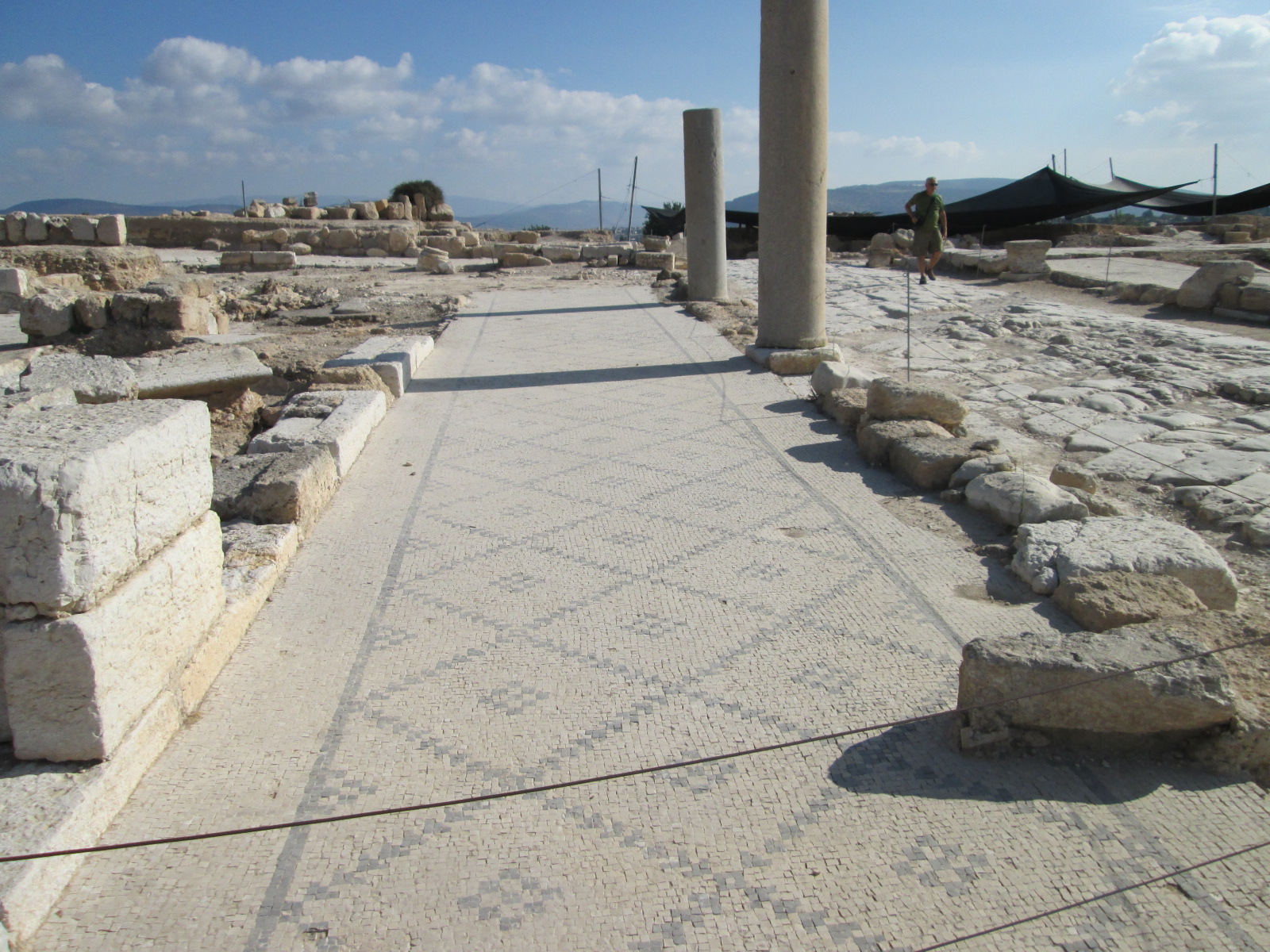Yesterday, today and tomorrow’s activity involved investigating a first century water system. We are concluding a dig on a cistern in order to determine the flow of water.
 |
| Cistern Archaeology Project at Beginning |
The town of Tsippori originated in the fourth century BC (or maybe before) on a high hilltop which offered both protection and a great view. The name Tsippori means “Bird,” perhaps, as the Talmud suggests, because it was "perched on the top of a mountain, like a bird.” (Megillah, 6, 81)
 |
| Looking across Galilee, as a Bird |
The city was very strong, and for this reason it became a regional capital. According to Josephus, Tsippori was called the "glory of the entire Galilee."
 |
| Mosaic walkways in the market in Zippori |
When Herod's son, Herod Antipas was made tetrarch, he made Sippori the capital of all of Galilee, and began a huge building project.
 |
| Mosaic floors from homes in Sepphoris |
It might have been at this time the cistern where we are working was created as a resigour along the aqueduct from water sources around the Nazareth Mountains.
 |
| Information sign for the Cistern |
The population was mixed, but mostly gentiles.
 |
| Mosaics from homes in Tsippori |
The city is laid out in a typical Roman pattern with wide north-south and east-west cardios. There is a large shopping complex where the main roads cross.
 |
| Walking on the old Roman Cardio |
The homes in Sepphoris were quite ornate and featured mosaic floors.
 |
| Mosaic Mona Lisa of the Galilee |
A small Jewish area is located near the top of the hill,
 |
| Jewish Neighborhood in Zippori |
It features mikvah pools, which tell of its Jewish character.
 |
| Looking at a Mikvah Pool |
The Sanhedrin met here for a time after the destruction of the Temple.
 |
| Bird's Eye View of Jewish Neighborhood, Mount Carmel in background |
Rabbi Yehuda Hanassi transferred the seat of the Sanhedrin from Bet She'arim to Tsippori, and around 220 CE he completed the Mishna in the city.
 |
| Synagogue Mosaic |
The Synagogue of the city saw several renovations over the years. The mosaic floor of the fifth century Synagogue is enclosed with a multimedia presentation. It contains scenes from Bible stories, priestly offerings and a zodiac diagram.
 |
| Cistern Project this evening, compare for progress |
Our work on the water cistern has made huge strides in the past few days.
 |
| Tour Group from Georgia that helped us dig |
We have found pottery, old nails, roof tiles, some Roman glass, and old coins.
 |
| One of the coins found at Tsippori |
The archaeological dig was productive and enjoyable.


